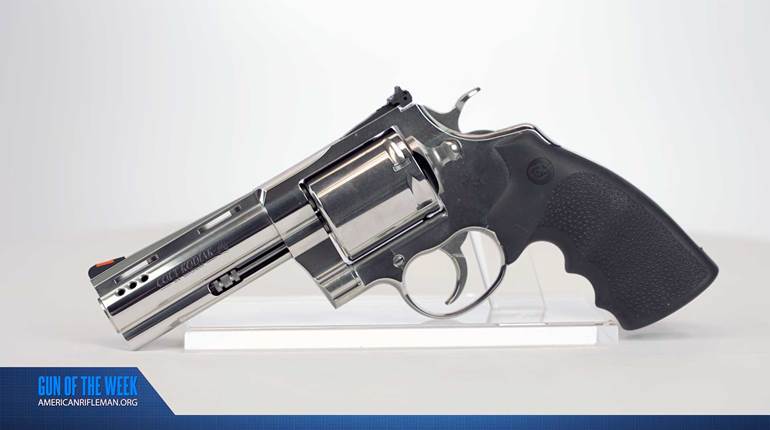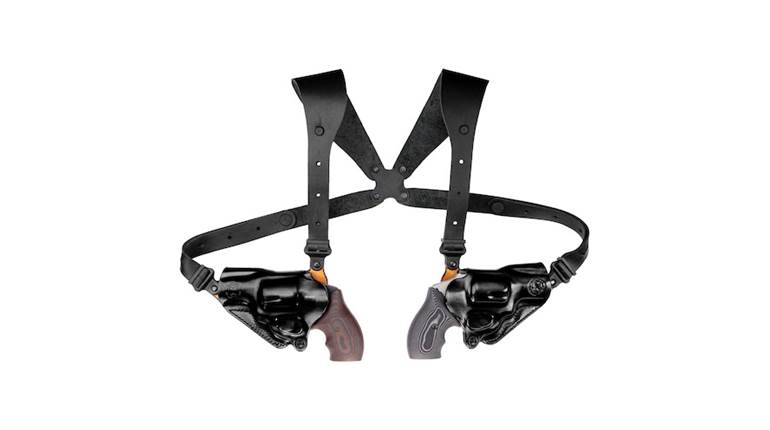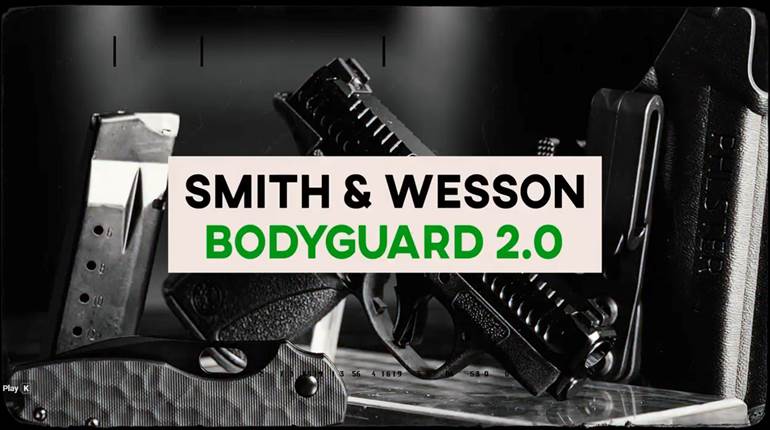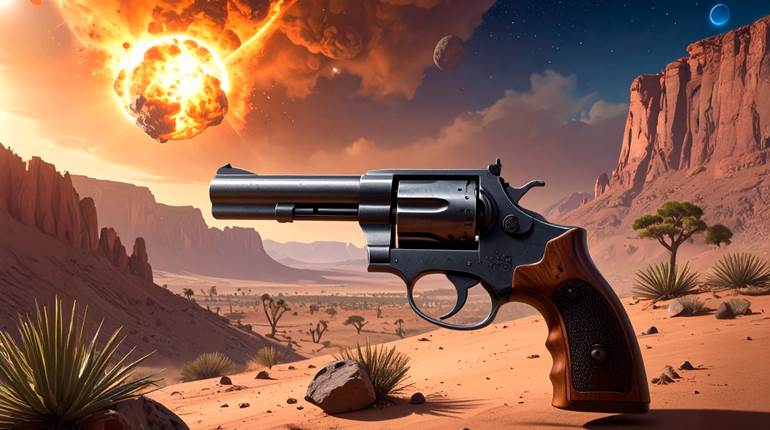
During the late 1930s, there was much hullabaloo about the .357 Magnum; how it was the most powerful handgun in the world. D.B. Wesson ran around hunting everything from prairie dogs to grizzly bears with the new revolver, and—as is usually the case with something new and cutting edge—there was a lot of myth mixed with fact.
But a bunch of savvy six-gun men had known for a long time about the .44 Special. A superbly accurate cartridge, it had been around since 1907 and was developed as smokeless powder supplanted blackpowder in the .44 Russian cartridge. The little Russian just didn’t have enough room in its stumpy case for the new propellant. Until quite recently, the factory loads for the .44 Special have been pretty anemic—a 246-gr. lead round-nose bullet at a sleepy 750 f.p.s. with 310 ft.-lbs. of energy—about equal to its predecessor.
These six-gunners knew the .44 Spl. was capable of far better performance. As newer smokeless powders were developed and metallurgy in revolvers improved to handle the higher pressures generated by those powders, .44 Spl. aficionados began handloading heavy semi-wadcutter bullets into the 1,100 to 1,300 f.p.s. range. But because no high-performance factory loads existed, the .44 Spl. crowd was generally viewed as an offbeat niche group. Gunmakers turned out .44 Spl. revolvers on a regular basis, but never near the quantities as .38 Specials or .45 ACPs, and there always seemed to be a premium attached to the .44 Spl.

One of the biggest supporters of high-performance .44 Spl. loadings was Elmer Keith. It was his incessant promotion of case-filling amounts of Hercules 2400 powder pushing a 245-gr. Lyman No. 429421 cast bullet of his design to some 1300 f.p.s. that led to the development of the .44 Magnum in 1956. Shooters spoke regularly of this load’s power … and its recoil: “As I had expected, my first testing presented another problem. The recoil was too heavy for the small, poorly-shaped [sic] grips that come with the gun. After thirty shots my hand was through for the day … . My next move was to get Walter Roper of Longmeadow, Massachusetts, to make a new grip for the gun … . When the grip was delivered and tested with the new loads I received another boost in enthusiasm … . I had what I wanted—a handgun with more killing power than a .44-40 rifle and a trajectory that would hit a woodchuck from one to one hundred yards … ,” wrote George W. Rice in the February 1949, American Rifleman.
Rice had been in correspondence with Keith regarding his “heavy .44 loads,” as Elmer liked to refer to them. Keith had been loading as much as 22 grs. of 2400 in the old balloon-head .44 Spl. cases—the same load he eventually settled on in solid-head .44 Mag. cases a few years later. Eventually though, cooler heads prevailed, and it was generally accepted that 17.5 grs. of 2400 (18.5 grs. in balloon-head cases) was about all the .44 Spl. should be forced to swallow. Still, at this level, the .44 Spl. was way ahead of the .357 Mag. in terms of power and terminal performance, and it maintained its accuracy edge as well.
Development of the Cult
The .44 Spl. became a favorite of many western lawmen who handloaded their own ammunition—a practice that induces a severe case of the vapors in modern-day law enforcement administrators who have become accustomed to, and comfortable with, the litigious society in which we now live. But in those innocent times, these lawmen knew a felon smacked in the thorax with a .44-cal. semi-wadcutter at 800 to 900 f.p.s. was very likely out of the fight.

Handgun hunting—especially big game—was still in its infancy compared to what we see today. There were a few intrepid souls in America’s hinterlands regularly stalking game with short guns, but they were generally considered “out on the edge” by rank-and-file hunters.
Not all .44 Spl. aficionados were frame-bending magnum enthusiasts, though. Quite a few outdoorsmen, who weren’t necessarily big-game hunters with a revolver, found the .44 Spl. to be one of the most accurate and well-behaved rounds available in a handgun. Take that same 245-gr. semi-wadcutter, and launch it some 750 to 850 f.p.s. from a large-frame revolver. You’ll immediately find a very pleasant load that is capable of neatly punching out the X-ring of a standard pistol target, rolling a tin can reliably and/or putting down the odd cottontail or jackrabbit with authority.
During the 1970s and into the early ’80s, finding a Smith & Wesson or Colt revolver for sale in .44 Spl. was about as easy as finding a Saddam Hussein sympathizer in Washington, D.C., today. When the film “Dirty Harry” came out in 1971, it spurred an intense interest in the .44 Mag. Model 29 Smith & Wesson. Everybody simply had to have one of those “cannons.”
Many who managed to acquire one would take it to the range with factory loads and quickly found the real stuff is much more difficult to handle than movie blanks. They would then do one of three things: sell or trade it (I don’t want any more of that darned gun!); put it away, not shoot it and hope its value went through the roof; or, they would shoot mild-mannered .44 Spl. loads in the big gun.
Dues Paying
I was one of those whose first experience with the .44 caliber was with the magnum. It had taken a while, but with enough loot saved from some menial job, I managed to find a 61⁄2"-barreled Model 29 Smith & Wesson .44 Mag. My infatuation with the big .44 didn’t come from the movies, it came from reading about it, and because I was so gunstruck and wanted at least one of everything, I had to have “the most powerful handgun in the world.”
It was in the mid-1970s, and I was shooting some 500 to 800 rounds of .38 Spl., .357 Mag. and .45 ACP every week. I was young, tough and (I thought) good. The .44 Mag. did not intimidate me, but I certainly respected it. Several of my friends tried my Model 29; few wanted to shoot more than a cylinder full of the magnum loads, and a couple of them refused to shoot more than one round.
Around that time, I began reading some of Skeeter Skelton’s stuff, and he waxed on a great deal about the .44 Spl. Gun nut that I was, I innocently began trolling gun shops and gun shows to find an S&W Model 1950 Target .44 Spl., and after several months, I found exactly one example of it at a gun show. It was in good shape, and the owner had a price tag of $750 on it—about what I made in a month at that time. Gun nut or not, that was out of the question for me.
The Model 1950 in .44 Spl. had been discontinued for more than 10 years—a result of lackluster sales in the face of its big brother—and there were no plans to bring it back. Colt had discontinued its large-frame New Service double-action revolver in 1944, and there were no plans to offer it again, either. There was a trickle—more like a drip—of Single Action Armys in .44 Spl., but those prices were astronomical as well. The only readily available factory .44 Spl. was from the Charter Arms and its Bulldog—a five-shot revolver with a 21⁄2" or 3" barrel. It may have been okay for a backup or off-duty gun, but it was no field revolver. Nevertheless, I had to have a .44 Spl.

A New Mexico-based pistolsmith that Skelton often utilized, Bob Sconce, had acquired a few original 61⁄2" 1950 Target barrels in .44 Spl. and was installing them on customers’ N frames and reboring the cylinders. The raw barrels were $125. I put my name on a waiting list and found an S&W Model 28 Highway Patrolman .357 Mag. to base my .44 upon. Sconce took ill and could not complete my conversion, but he did sell me a barrel.
I had another gunsmith fit the barrel and rechamber the revolver. While he was at it, I had him trim the barrel to 5" and remount the front sight. He also timed the revolver significantly tighter than the factory did—at the time S&W was crush-fitting the barrels on its lesser-grade revolvers—so that the cylinder would line up perfectly each time. He sent it to me unfinished but mechanically complete, and I shot it. Once I shot this revolver, I finally understood what the .44 Spl. was all about.
If memory serves me correctly, the first six shots of factory loads nestled into a bit less than 11⁄2" at 25 yds. over sandbags. I shot up my two boxes of factory stuff; bought a set of reloading dies and some cast semi-wadcutters on the way back from that shooting session and reloaded my 100 rounds. I chose an old Skeeter Skelton favorite: 7.5 grs. of Hercules Unique under a 245-gr. semi-wadcutter. Back out in my little desert canyon range, I was delighted to see the handloads grouped about as tightly. I returned the revolver to be finished and ordered a holster.
That revolver has since been with me on countless small-game hunts, and for the brief time I wore a badge in a small Wyoming town, it was my belt gun. I’ve won a few casual pistol matches with it, and once I took a sawbuck from a guy who bet me I couldn’t shoot a pine cone out of the air with it—I did … four times out of six. And no, please don’t ask me to do it again today. I know the difference between luck and skill.
"What's So Special About The .44 Special?"
A few years later, Smith & Wesson revived the Model 24—its new designation for the 1950 Target .44 Spl.—and like an idiot, I missed out—almost. In the early 1980s, Lew Horton Distributing ordered a special limited run of Model 24s with 3" barrels and grips modified to match the K-frame round-butt configuration. In a rare moment of lucidity, I managed to scrape together the cash in time to get one before they were all gone. It, too, is very accurate, especially considering its abbreviated barrel, and when I’m cruising the boondocks on foot, it’s usually nestled in a custom-made Milt Sparks holster on my right hip. It slaps ground squirrels and cottontails squarely with either the Unique handload or 200-gr. Winchester Silvertips, recoil is negligible, and even though it’s no aluminum featherweight, my little .44 is a joy to carry compared to its full-size cousins.
Within a year of acquiring my three-incher, I was hanging out at a gun store in Afton, Wyo., when the owner drawled, “C’mere Campbell. I’ve got something you’ll want to see.” I should probably have made a beeline to the door, because that statement inevitably means I’m about to fork over some money. He pulled a brown box marked “Colt” from under the display case and opened it. In it, pristine as it could be, was a Single Action Army in … oh heck, you know. I immediately traded him a Leupold-scoped Ruger No. 1 in .30-’06 Sprg. and $300 to boot.
It’s a third-generation gun, so it’s not got quite the fit and finish of the older SAAs, but it is a Colt, and it is a .44 Spl. I had S.D. Myers make a Tom Threepersons cross-draw holster for the 51⁄2"-barreled Thumbuster. A few years later, I put together some “heavy .44 loads”—not quite as stout as Keith’s—with 16 grs. of 2400 and his 245-gr. No. 429241 bullet cast of wheelweights. It was with me one day on a ranch on the central coast of California.
I wasn’t actually hunting. It was more of an afternoon stroll through the foothills, and on those occasions I just prefer the company of a good six-gun. My mind was wandering, as it often does, so I nearly jumped out of my skin when the brush just below me about 10 feet away began rattling and popping. Suddenly, a young sow wild pig boiled out and began to climb up the other side of the embankment. It was a perfect “eater” pig, and I pulled out the Colt, thumbed the hammer and swung with it. The gun bucked, and I heard the bullet hit the sow at about 10 yds. It jumped with a squeal, ran another 10 yds. and dropped.
A Special Place
There are those times when I am hunting with a handgun, and I want as much power as I can handle. That’s when the .44 Mag. or .454 Casull or perhaps a rifle-caliber single-shot comes out. The purpose is specific—take a big-game animal as humanely as possible with a short gun.
And of course, there are those laidback days shooting varmints when a rimfire or small-caliber handgun seems to fit. These are casual days with friends hazing ground squirrels intermixed with tossing a spinnerbait into a farm pond for largemouth. Here, the purpose is specific as well: Have fun without any outside pressure.
But there are days when I may need to be—or simply want to be—armed for come-what-may; big or small; not too far away; but it may require a very accurate shot. I don’t want to be burdened with a heavy magnum or single-shot pistol, and a pipsqueak rimfire won’t do either. Those are the days I put on one of my .44 Specials, and I’m darned glad I have some to choose from.
The 4-Inch .44 Special
In 1954 at the NRA Annual Meetings, Elmer Keith was reputed to have cornered then-S&W President Carl Hellstrom in an effort to promote Keith’s idea of using heavily loaded .44 Spl. revolvers for law enforcement. The feisty Rocky Mountain cowboy allegedly put considerable pressure on Hellstrom to provide him a pair of 4"-barreled 1950 Target models, an uncatalogued item at that time. Hellstrom offered if he could get an order for six of the four-inchers, he’d do it.

Among those listening to the exchange was Bill Dunbar, a Petersburg, Va., gunsmith, and he was quick to throw in with the idea of a 4" .44 Spl. This 1950T is one of those first six four-inchers. It is a five-screw S&W, and it has seen a fair amount of use but not abuse. An interesting note: This revolver has a red ramp front sight. The box it came in declares it a 1950 Target .44 Revolver with a “61⁄2 Inch” barrel, but an unknown factory worker has overwritten the “61⁄2” with a “4” in silver pencil. Dunbar is gone, and the revolver now belongs to his long-time friend Joe Roberts.

This feature article, "What's So Special About the .44 Special?," appeared originally in the December 2004 issue of American Rifleman. To subscribe to the magazine, visit the NRA membership page and select American Rifleman as your member magazine.
















![Auto[47]](/media/121jogez/auto-47.jpg?anchor=center&mode=crop&width=770&height=430&rnd=134090788010670000&quality=60)




















